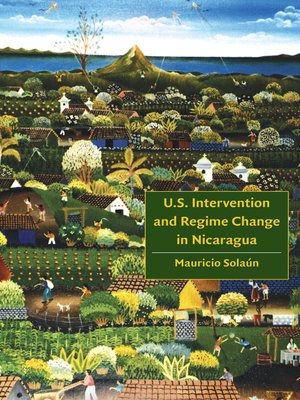
Sign up to save your library
With an OverDrive account, you can save your favorite libraries for at-a-glance information about availability. Find out more about OverDrive accounts.
Find this title in Libby, the library reading app by OverDrive.



Search for a digital library with this title
Title found at these libraries:
| Library Name | Distance |
|---|---|
| Loading... |
As President Carter's ambassador to Nicaragua from 1977–1979, Mauricio Solaún witnessed a critical moment in Central American history. In U.S. Intervention and Regime Change in Nicaragua, Solaún outlines the role of U.S. foreign policy during the Carter administration and explains how this policy with respect to the Nicaraguan Revolution of 1979 not only failed but helped impede the institutionalization of democracy there. Late in the 1970s, the United States took issue with the Nicaraguan dictator Anastasio Somoza. Moral suasion, economic sanctions, and other peaceful instruments from Washington led to violent revolution in Nicaragua and bolstered a new dictatorial government. A U.S.-supported counterrevolution formed, and Solaún argues that the United States attempts to this day to determine who rules Nicaragua. Solaún explores the mechanisms that kept Somoza's poorly legitimized regime in power for decades, making it the most enduring Latin American authoritarian regime of the twentieth century. Solaún argues that continual shifts in U.S. international policy have been made in response to previous policies that failed to produce U.S.- friendly international environments. His historical survey of these policy shifts provides a window on the working of U.S. diplomacy and lessons for future policy-making.







